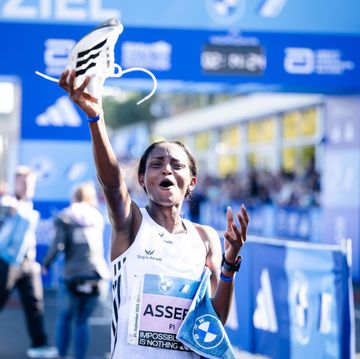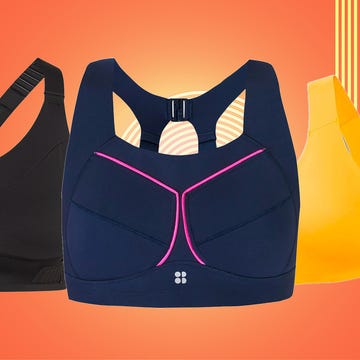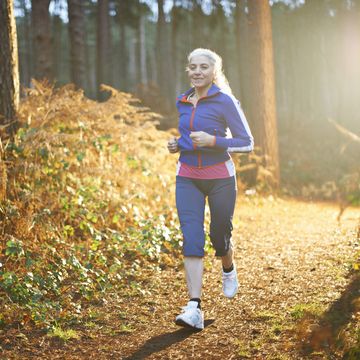When I run a workshop on sports nutrition, if I ask the question, ‘What’s the role of nutrition in performance?’ I’m usually met by the answer, ‘Fuelling and recovery.’ While this isn’t wrong, it’s a small part of a wider picture, and shows me how much we’ve simplified the role diet has on your body. The key role of nutrition is to allow the body to function and perform optimally in all aspects of life, not just running, but few of us stop to think about the intricate processes that allow this to happen.
Physicist Brian Cox defined the human body as a series of chemical reactions, and I’d agree. The majority of these reactions work on feedback loops to ensure that our internal physiological environment remains balanced. Your body is an ecosystem that requires constant tending to, attention and understanding.
What are hormones?
Many of these chemical reactions involve hormones. Hormones are chemical messengers that are made by specialist cells within endocrine glands, and they are responsible for your body functioning correctly.
When you think about hormones, oestrogen and testosterone might come to mind first, but while they are important for reproductive health, they are only two in a long list. Others include insulin, leptin, cortisol, growth hormone, thyroid hormones T4 and T3, and melatonin. They play key roles in your body – such as regulating sleep, optimising bone health, maintaining metabolic function, appetite control and ensuring adaptation from training.
Thus, maintaining hormonal health is central to your body’s performance, and understanding how to harness the benefits of these amazing chemical messengers can help you to meet your full potential in and out of training.
Energy availability and hormone function
Modern society tends to emphasise the message ‘move more and eat less’. However, studies have determined that the body is biased towards energy balance, meaning that very active people need to ‘move more and eat more’ to see performance benefits from training. Energy availability is the energy left over for biological functions once the energy cost of movement (such as running) has been subtracted. Therefore, if you don’t eat sufficiently to meet both of these demands, your body turns on compensatory behaviours that result in the down-regulation of metabolism and hormonal function, which has negative implications for your health and performance. But how do these requirements change as you move through your life?
Hormones in adolescents
Adolescent runners have high energy requirements as they are going through growth, development and puberty. One of the key concerns with this age group is not meeting their energy needs and delaying puberty as a result.
In females, if menstruation has not started by 16 years of age, it’s known as primary amenorrhoea and shouldn’t be ignored. Adolescence is when peak bone mass occurs, but if there are disruptions to energy intake, growth and the onset of menstruation, there can be severe consequences.
Oestrogen (and testosterone in males) is a key component for optimal bone health, along with sufficient energy, calcium and vitamins D and K. When primary amenorrhoea occurs in females, they are at high risk of lower bone density and thus developing stress fractures. In fact a common observation among young athletes, especially females in their early twenties who have or had primary amenorrhoea, is that this is a common time for them to develop their first stress fracture. For some, it can lead to a path of repeated injuries and inconsistent training.
Cycle tracking
It’s important to recognise that having a period is a barometer of health – it’s basically an indication that conditions are optimal for pregnancy to occur. However, a woman’s period is more than just a reproductive portal. As we have already seen, delayed or no menstruation can have serious consequences for bone health and increased risk of injury. On top of this, oestrogen is important for our cognitive function, proprioception, balance, heart health and mood.
A normal menstrual cycle is defined as anything between 23 and 35 days. The main things to be aware of are changes to your cycle, such as the cycle length getting longer or shorter, flow getting lighter or heavier, the number of days of your cycle changing or your cycle stopping (secondary amenorrhea).
Any deviation from your normal cycle shouldn’t be ignored. Nutrition intake and timing (especially in runners), changes in volume, training load and body composition can all interfere with your period, so tracking your cycle and being aware of changes can help ensure you’re staying on top of your fuelling and training.
Having a regular cycle also shows that the rest of your hormones are working in synergy. This includes growth hormone and testosterone, which are essential for building lean muscle mass and ensuring you’re making progression from training.
One point to highlight for those taking the oral contraceptive pill is that, while every woman has the right to it, most hormonal contraception will disguise or adjust your natural cycle, so you won’t necessarily know if your training and lifestyle are impacting it.
Perimenopause and beyond
Perimenopause (or menopause transition) begins several years prior to menopause. It usually starts in a woman’s forties, but can start earlier in some cases and can last anywhere from several months to 10 years. Perimenopause stops at menopause, when the ovaries no longer produce eggs and oestrogen levels are low.
Women can start to see declining levels of oestrogen from around the age of 40 onwards. Oestrogen has several important functions relating to body composition and physical performance, which is why women in this age group are recommended hormone replacement therapy (HRT) to relieve symptoms.
To date, there are no studies that specifically look at athletic performance in perimenopausal women, but there’s solid evidence to back up regular exercise as a way to mitigate against some of the more unpleasant aspects of menopause, such as hot flushes, as well as for healthy ageing. Many women going through perimenopause experience changes to their body composition and decide that the only way to combat this is through restrictive diets and cutting down on or removing carbohydrates. But recent research shows the opposite– declining oestrogen levels mean that the female body is no longer efficient at using fat for fuel and so becomes more reliant on carbohydrates.
So carbohydrate intake, especially in women who remain physically active, is critical for performance and energy levels, which you may struggle with during this phase of life.
In addition, there’s a link between carbohydrate availability and thyroid function. When carbohydrate intake is reduced too much in females, it can result in a down-regulation of the thyroid gland and thus a slowing of the metabolism, impacting body composition and energy levels further.
During perimenopause, bone health becomes a real concern as declining oestrogen levels reduce protection. If you’re in this phase of life, try to ensure sufficient vitamin D and calcium intake, take up resistance training and consider using HRT to prevent further loss.
Strength for masters runners
It’s strongly believed that muscle mass and strength decline with age. They generally peak between 20 and 30 years of age, then begin to decline between 40 and 50, which speeds up when you reach 70. And yet, we have seen great strength in runners who are well into their fifties.
Resistance train
One key finding across all masters age groups is that the rate of decline in muscle mass is linked to physical activity, with inactive and sedentary peers experiencing a more rapid downturn. Resistance training seems to be pivotal in maintaining mass, so the addition of two or three sessions a week, perhaps replacing one or two runs, can reap huge benefits.
Get enough protein
Ensuring there’s enough protein in your diet will help to slow the decline of muscle mass. Those eating between 1.8g and 2.2g per kilogram of body weight have been shown to maintain 40% more muscle mass than those with a low intake. A higher muscle mass means you are metabolically active and have an improved body composition.















